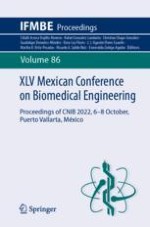2023 | Buch
XLV Mexican Conference on Biomedical Engineering
Proceedings of CNIB 2022, 6–8 October, Puerto Vallarta, México
herausgegeben von: Citlalli Jessica Trujillo-Romero, Rafael Gonzalez-Landaeta, Christian Chapa-González, Guadalupe Dorantes-Méndez, Dora-Luz Flores, J. J. Agustin Flores Cuautle, Martha R. Ortiz-Posadas, Ricardo A. Salido Ruiz, Esmeralda Zuñiga-Aguilar
Verlag: Springer International Publishing
Buchreihe : IFMBE Proceedings
